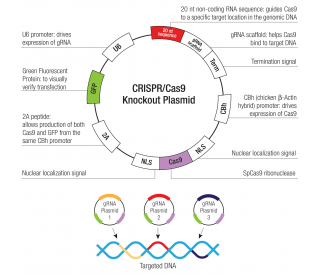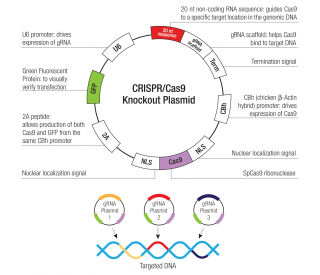详细说明
Species Reactivity
Human
Specificity
Detects human Rad17 in Western blots.
Source
Monoclonal Mouse IgG 2B Clone # 223802
Purification
Protein A or G purified from hybridoma culture supernatant
Immunogen
E. coli-derived recombinant human Rad17
Asn2-Arg240
Accession # NP_579922Formulation
Lyophilized from a 0.2 μm filtered solution in PBS with Trehalose. *Small pack size (SP) is supplied as a 0.2 µm filtered solution in PBS.
Label
Unconjugated
Applications
Recommended
ConcentrationSample
Immunoprecipitation
2-3 µg/500 µg cell lysate
See below
Please Note: Optimal dilutions should be determined by each laboratory for each application. are available in the Technical Information section on our website.
Data Examples
Immunoprecipitation | Immunoprecipitation of Human Rad17. Rad17 was immunoprecipitated from 500 μg of K562 human chronic myelogenous leukemia cell line lysate following incubation with 2‑3 µg Mouse Anti-Human Rad17 Monoclonal Antibody (Catalog # MAB1926) for 1 hour on ice. Rad17-antibody complexes were absorbed using goat anti-mouse IgG-agarose (Sigma). Immunoprecipitated Rad17 (left panel) was detected by Western blot using 1 µg/mL Human/Rat Rad17 Antigen Affinity-purified Polyclonal Antibody (Catalog # ). For additional reference, Western blot (right panel) shows lysates of K562 cell line probed with 1 µg/mL Human/Rat Rad17 Antigen Affinity-purified Polyclonal Antibody (Catalog # ). View our . |
Preparation and Storage
Reconstitution
Reconstitute at 0.5 mg/mL in sterile PBS.
Shipping
The product is shipped at ambient temperature. Upon receipt, store it immediately at the temperature recommended below. *Small pack size (SP) is shipped with polar packs. Upon receipt, store it immediately at -20 to -70 °C
Stability & Storage
Use a manual defrost freezer and avoid repeated freeze-thaw cycles.
12 months from date of receipt, -20 to -70 °C as supplied.
1 month, 2 to 8 °C under sterile conditions after reconstitution.
6 months, -20 to -70 °C under sterile conditions after reconstitution.
Background: Rad17
The DNA damage response activates cell cycle checkpoints to allow time for DNA repair and ensure the fidelity of each cell cycle. The Rad genes were first identified in yeast as genes required for the DNA damage response. Human Rad17 bears homology to the replication factor C (RFC) proteins and interacts with the Rad9/Rad1/Hus1 complex in cells exposed to multiple types of genotoxic stress, including ionizing radiation (IR) and ultraviolet light (UV).
Entrez Gene IDs:
5884 (Human); 310034 (Rat)
Alternate Names:
CCYC; cell cycle checkpoint protein (RAD17); cell cycle checkpoint protein RAD17; FLJ41520; HRAD17; R24L; RAD1 (S. pombe) homolog; RAD1 homolog; RAD17 homolog (S. pombe); Rad17; Rad17-like protein; RAD17SP; RAD24; RF-C activator 1 homolog; RF-C/activator 1 homolog







![Anti-CARD11 antibody [EPR2557] 100µl](https://yunshiji.oss-cn-shenzhen.aliyuncs.com/202407/25/ryuecwsu03m.jpg)
![Anti-CARD11 antibody [EPR2557] 40µl](https://yunshiji.oss-cn-shenzhen.aliyuncs.com/202407/25/0l4lvuuesv1.jpg)

![Anti-Caspase-9 antibody [E23] 100µl](https://yunshiji.oss-cn-shenzhen.aliyuncs.com/202407/25/3jnd4412gqi.jpg)

![Anti-CKS2 antibody [EPR7946(2)] 100µl](https://yunshiji.oss-cn-shenzhen.aliyuncs.com/202407/25/cfdt44gkqre.jpg)



 粤公网安备44196802000105号
粤公网安备44196802000105号